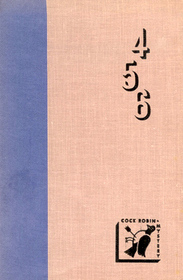Search -
Four, Five and Six by Tey: A Shilling For Candles/Daughter of Time/Singing Sands
Four Five and Six by Tey A Shilling For Candles/Daughter of Time/Singing Sands
Author:
Amazon Review By Michele L. Worley, April 26, 2003 — Four, Five and Six by Tey -- An Omnibus of Three Inspector Alan Grant stories — This omnibus' somewhat unusual title just indicates that it would complement its sibling, Three by Tey, since they don't overlap. The 3 books in this volume are 3 of Inspector Alan Grant's adventures. — Elizabeth Mack... more »
Author:
Amazon Review By Michele L. Worley, April 26, 2003 — Four, Five and Six by Tey -- An Omnibus of Three Inspector Alan Grant stories — This omnibus' somewhat unusual title just indicates that it would complement its sibling, Three by Tey, since they don't overlap. The 3 books in this volume are 3 of Inspector Alan Grant's adventures. — Elizabeth Mack... more »
ISBN: 158048
Publication Date: 1959
Pages: 1,024
Rating: 1
Publication Date: 1959
Pages: 1,024
Rating: 1
4.5 stars, based on 1 rating
Publisher: The MacMillan Company, New York
Book Type: Paperback
Members Wishing: 3
Reviews: Write a Review
Book Type: Paperback
Members Wishing: 3
Reviews: Write a Review
Genres:
- Mystery, Thriller & Suspense >> Mystery >> Traditional Detectives
- Mystery, Thriller & Suspense >> Mystery >> Anthologies




